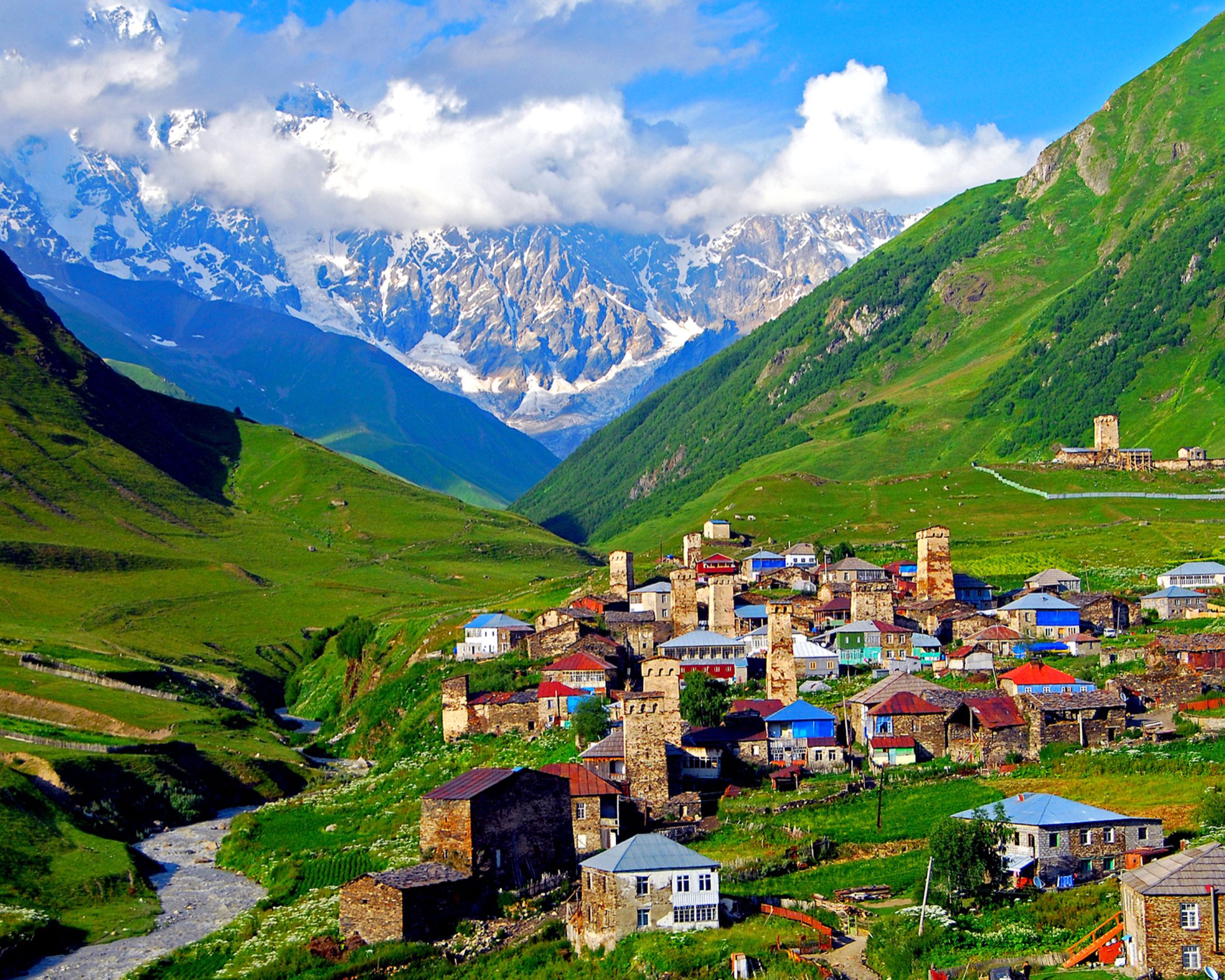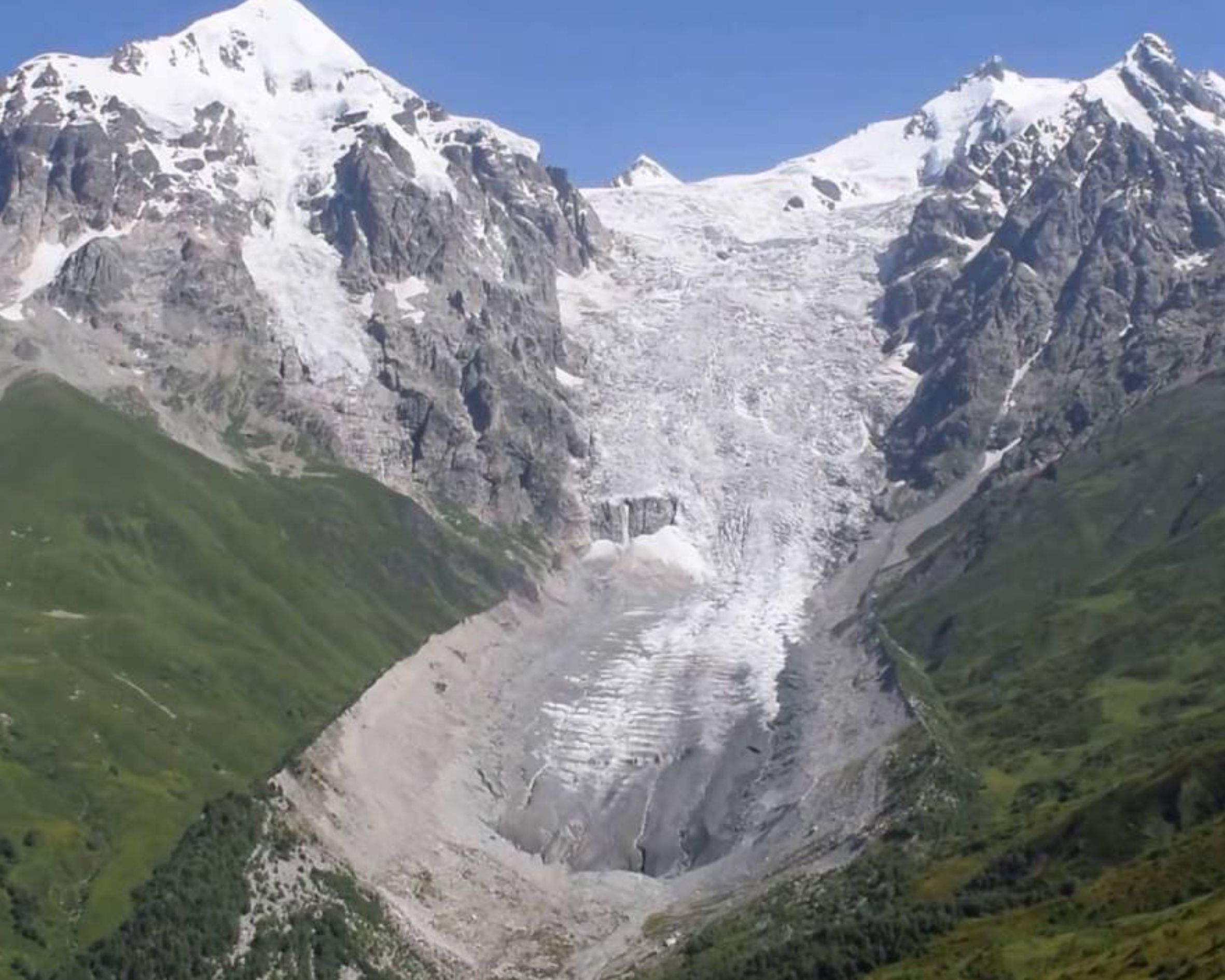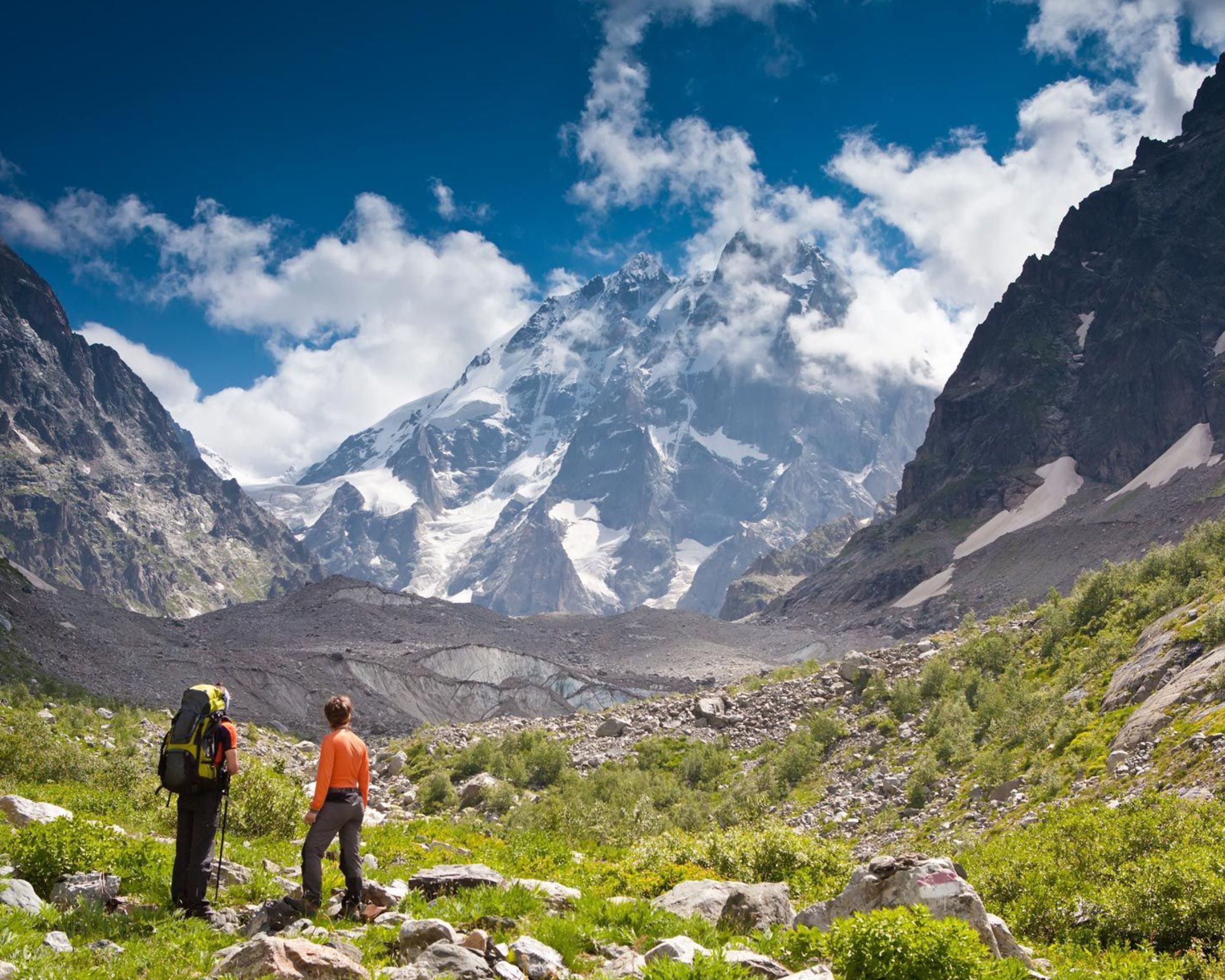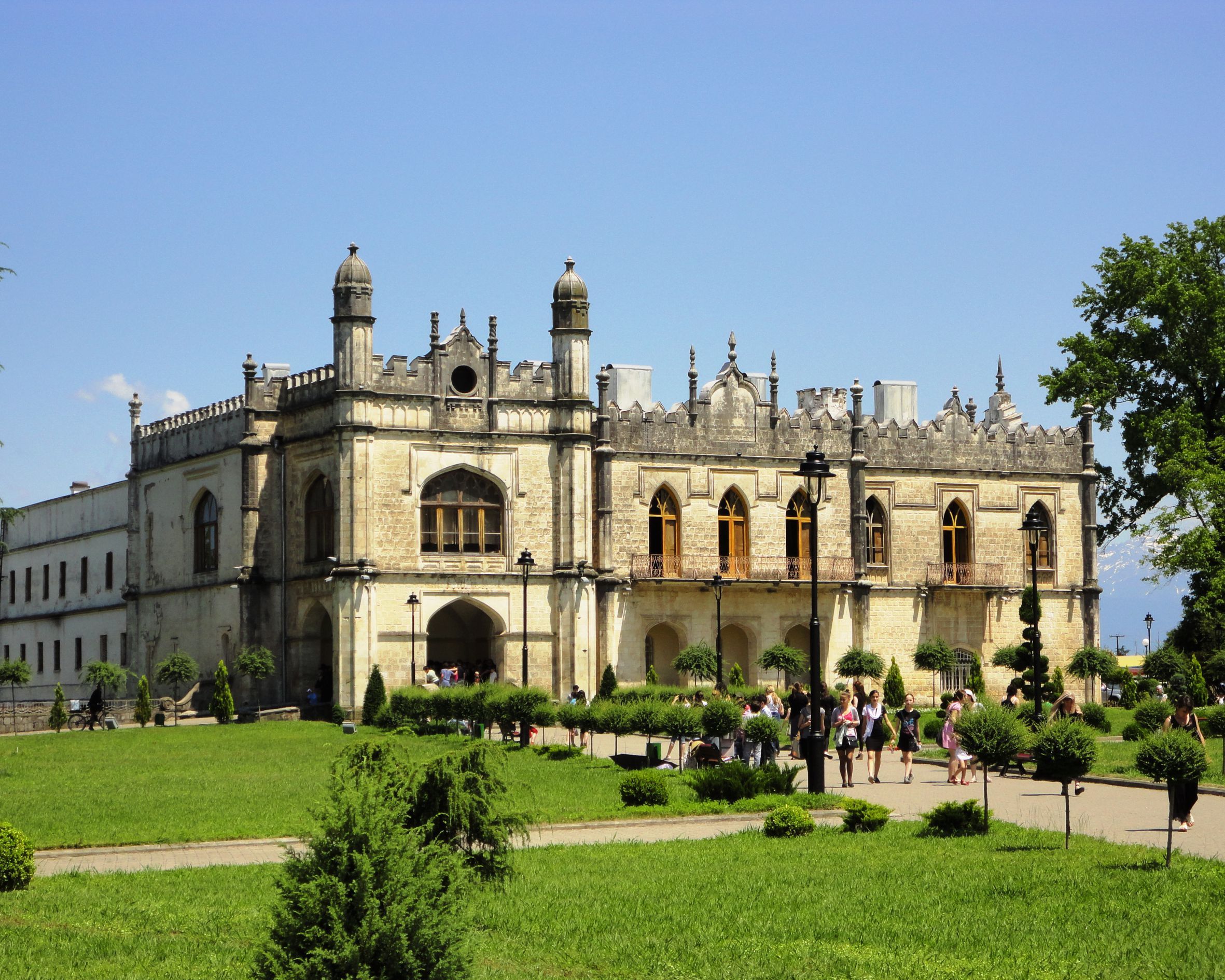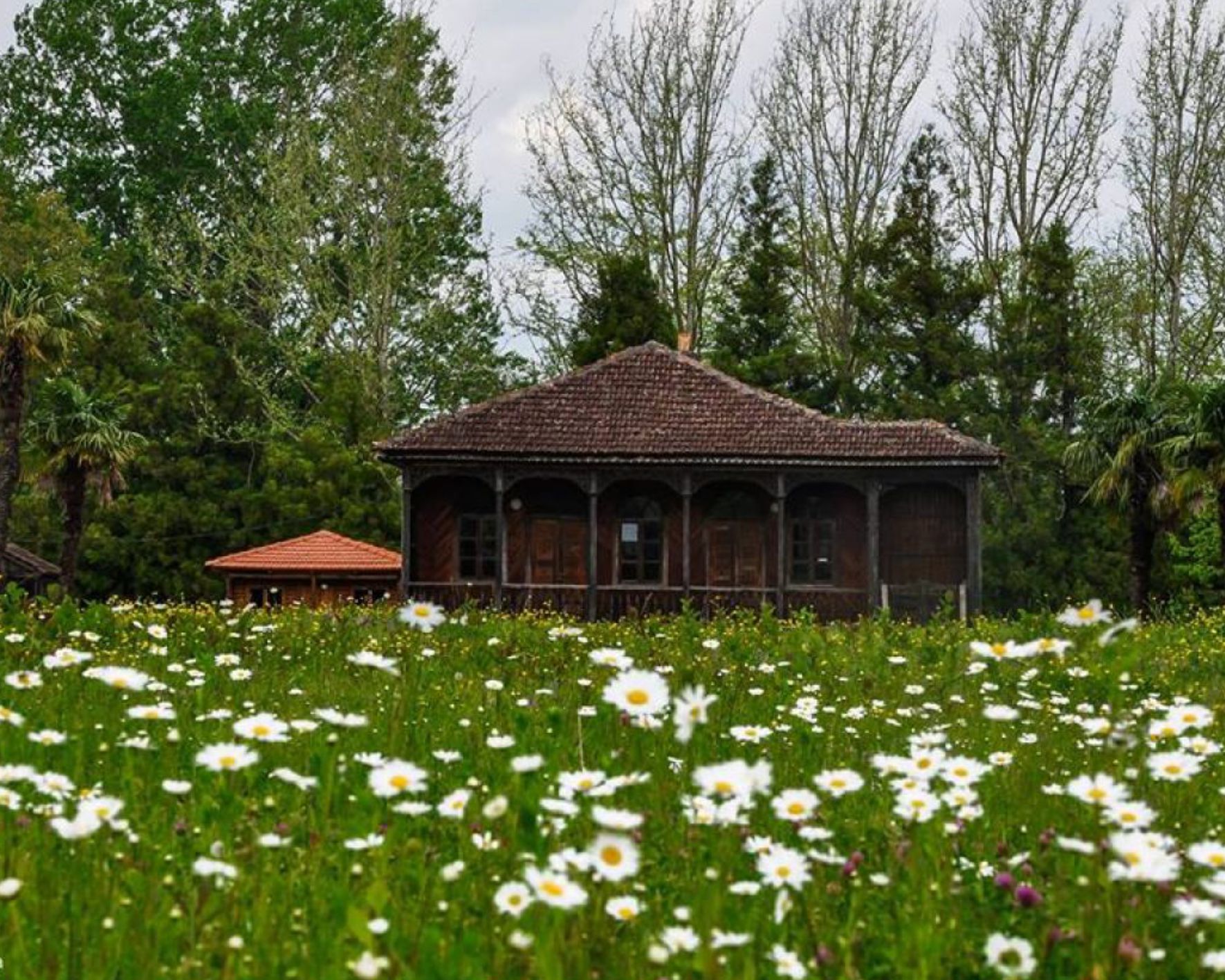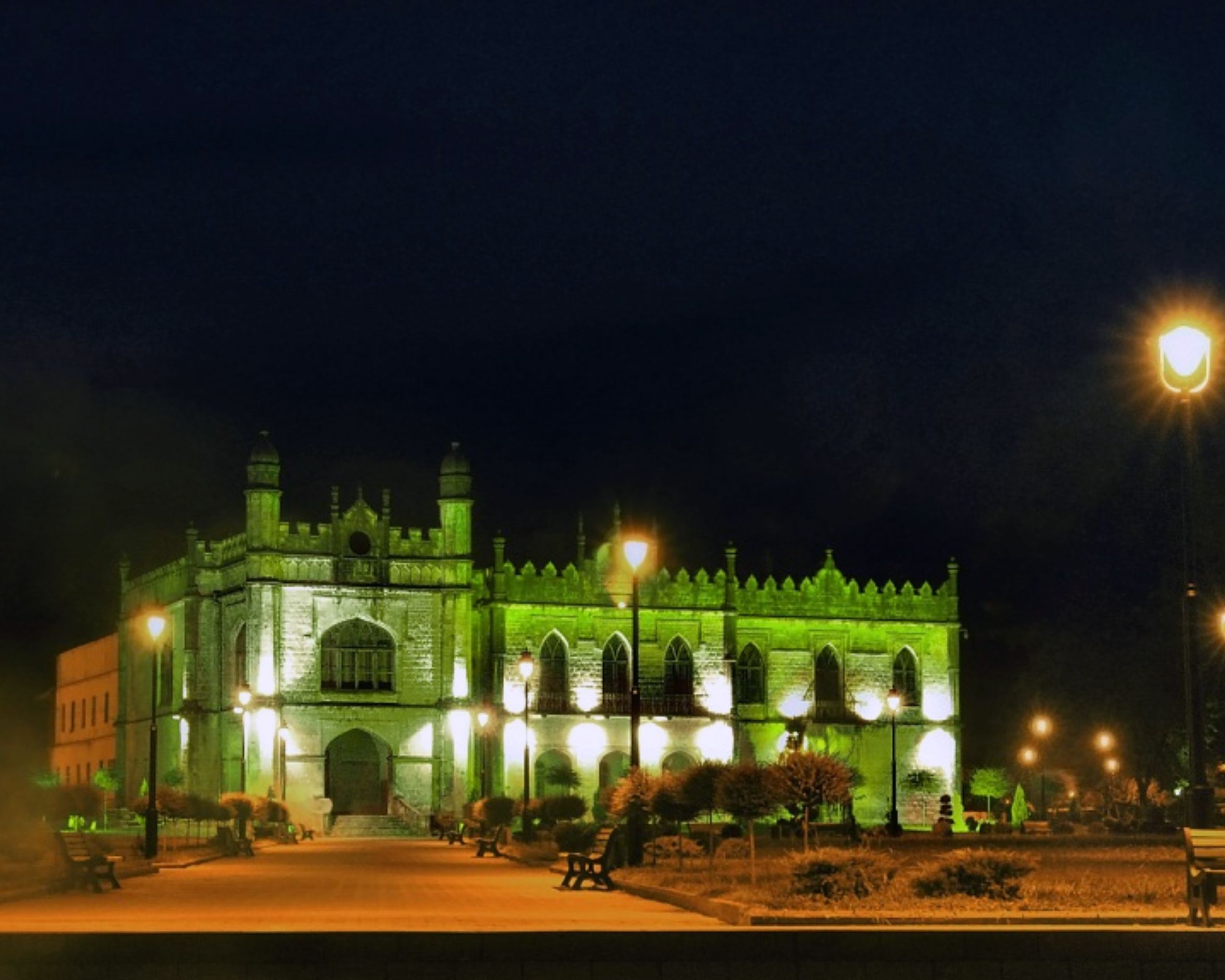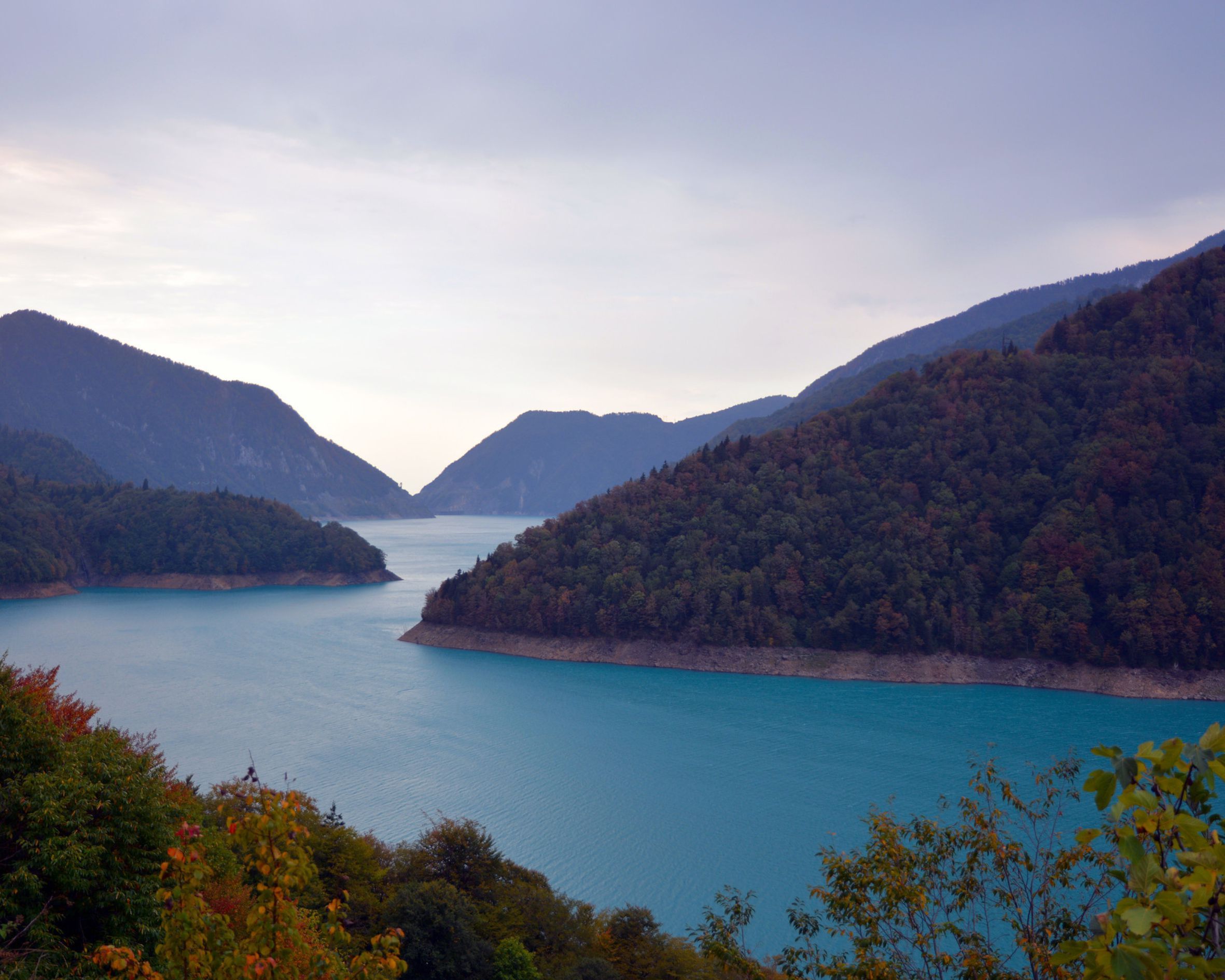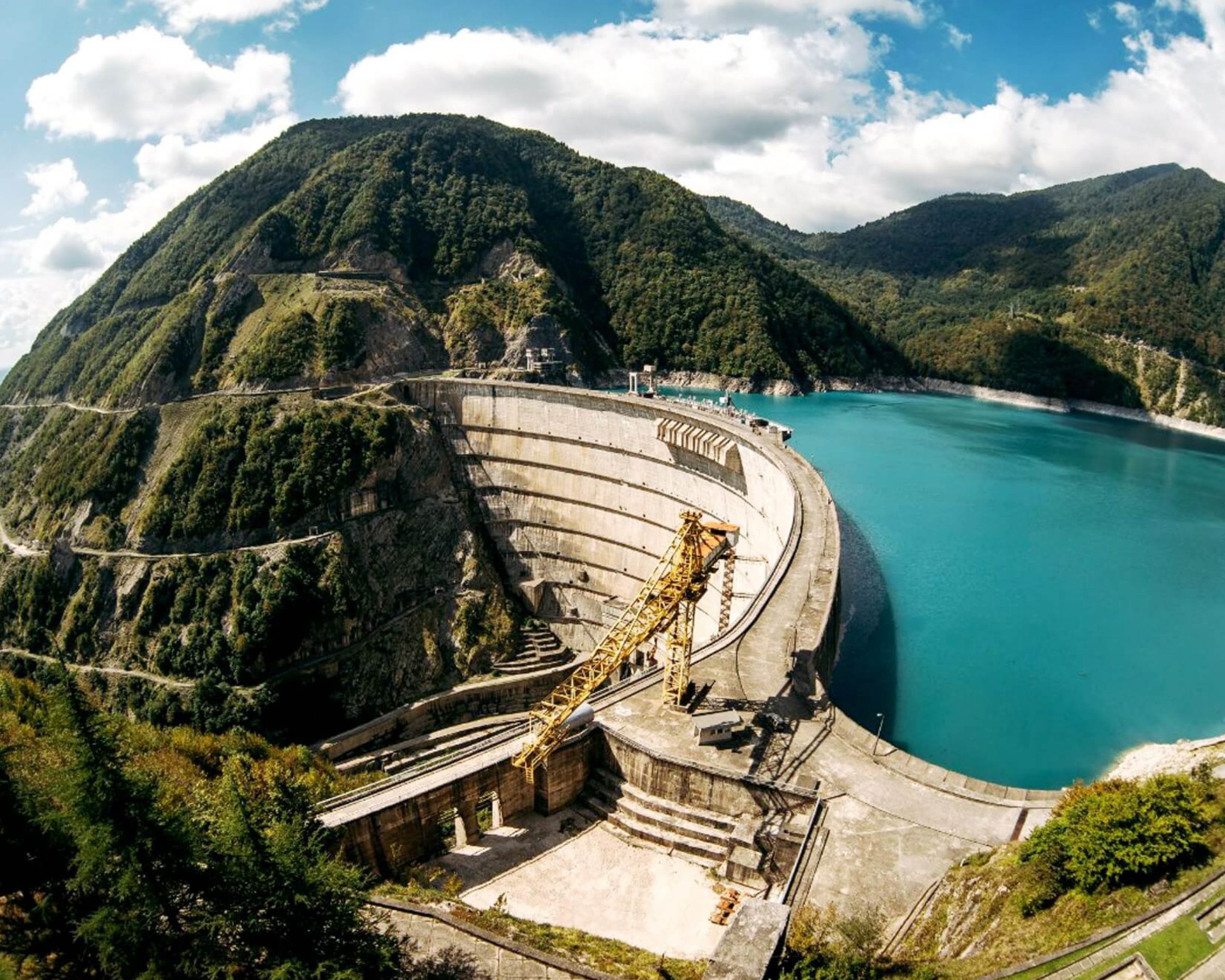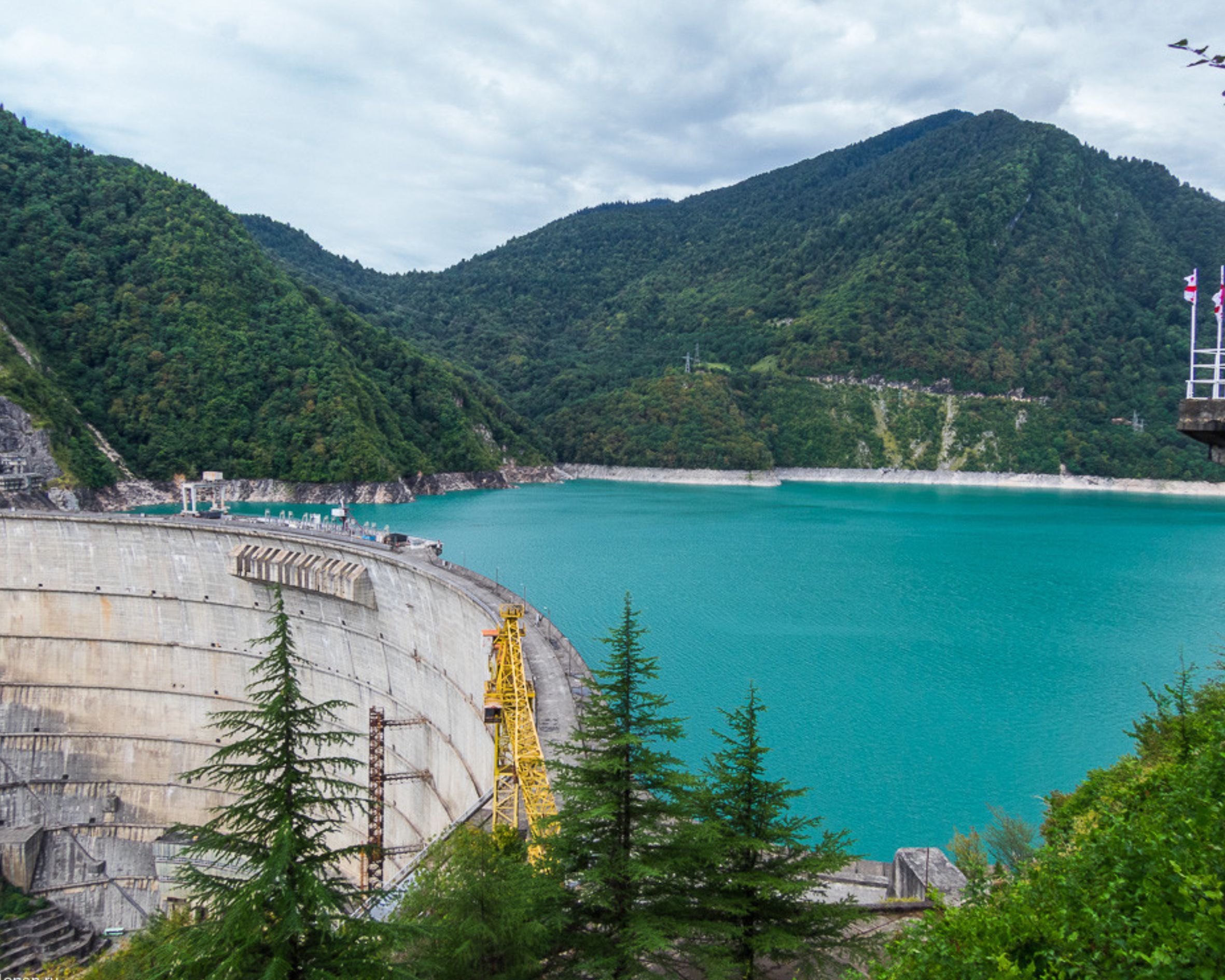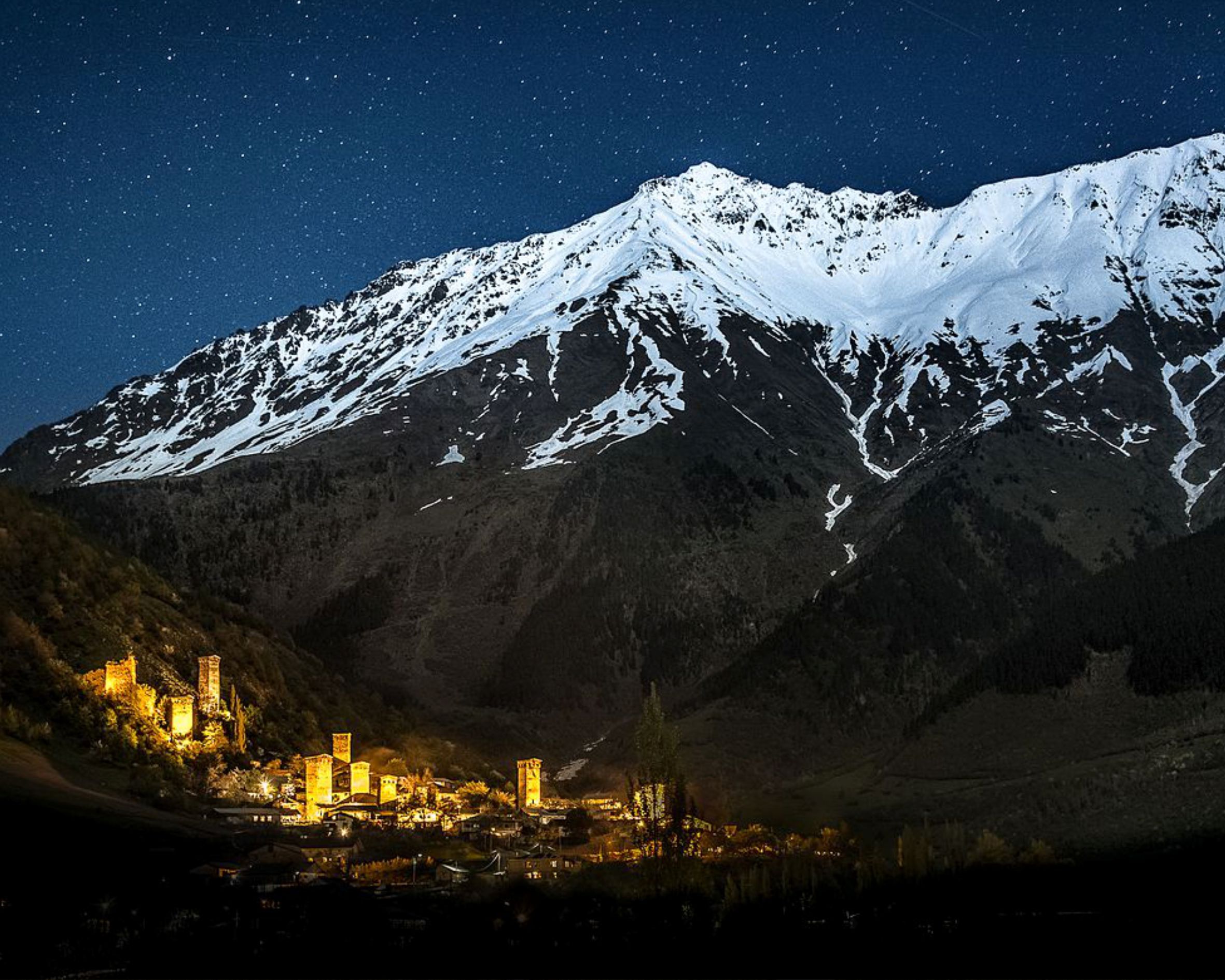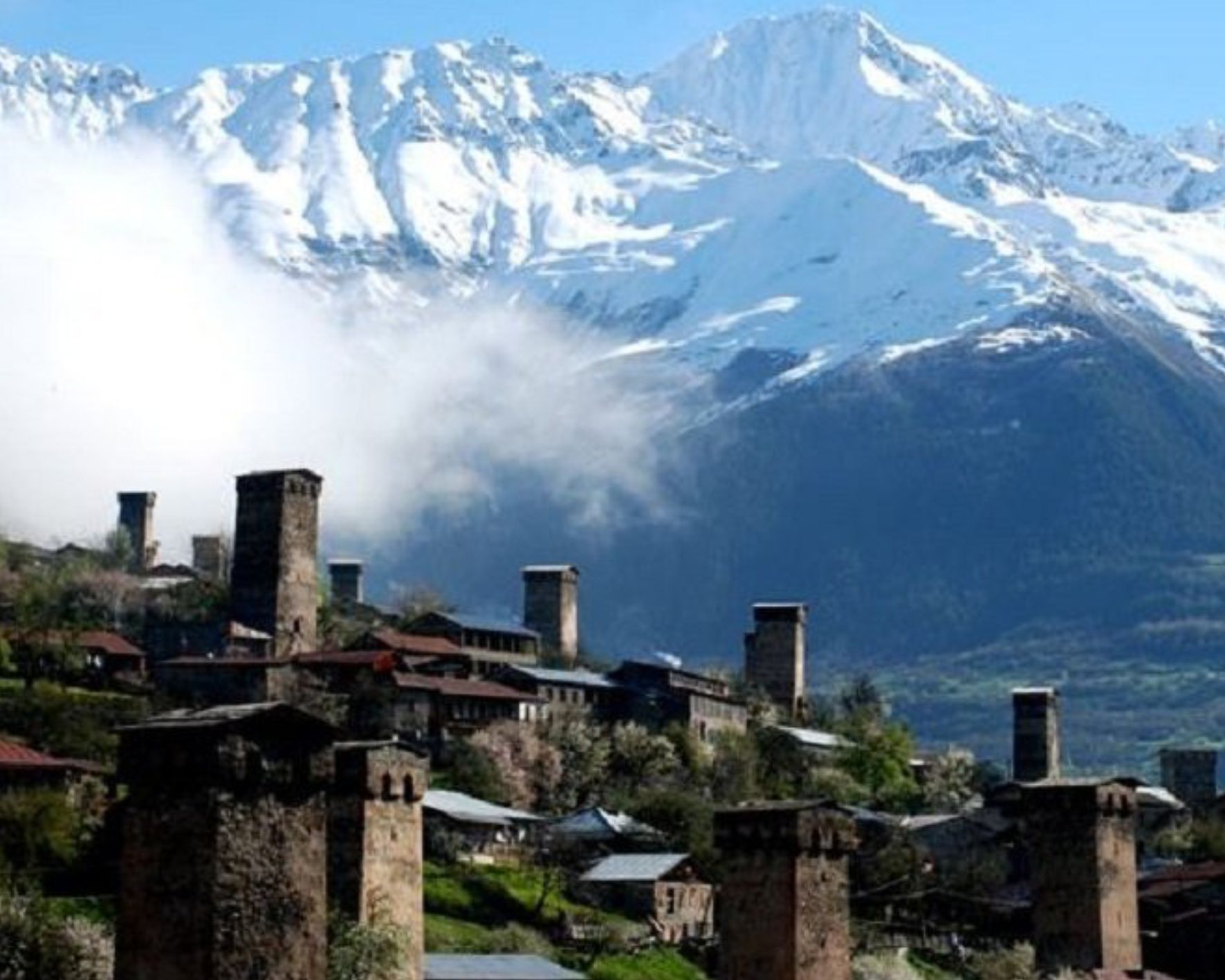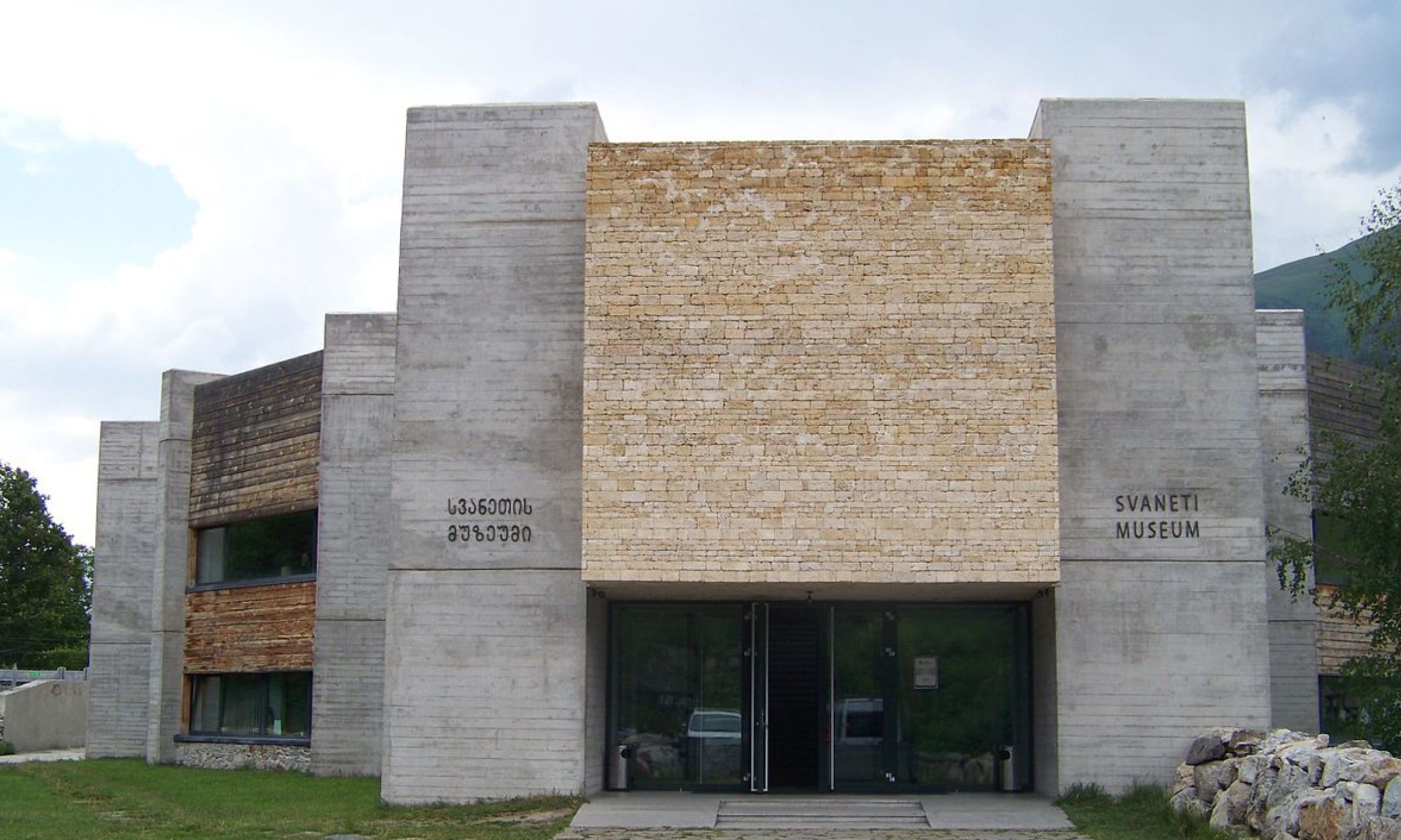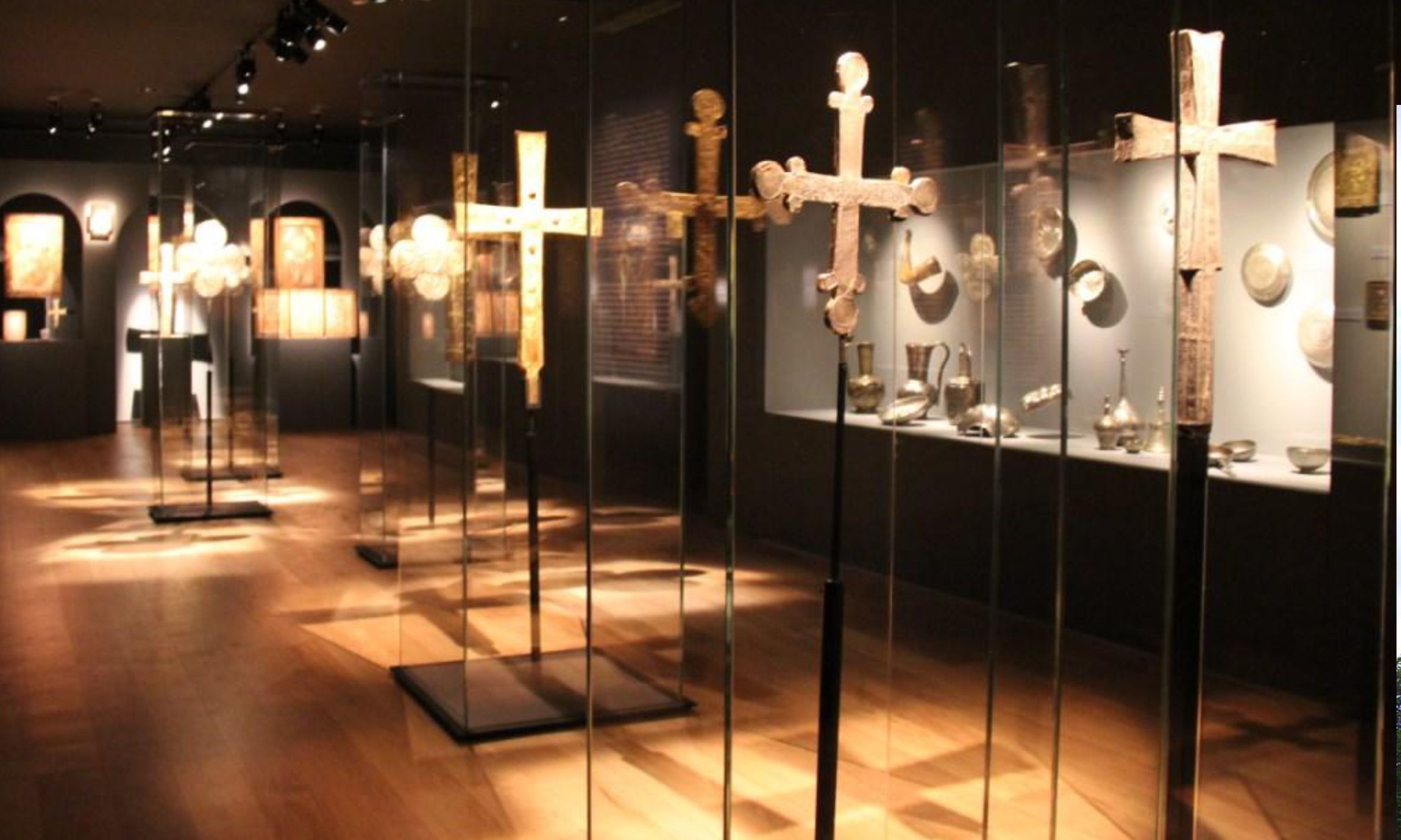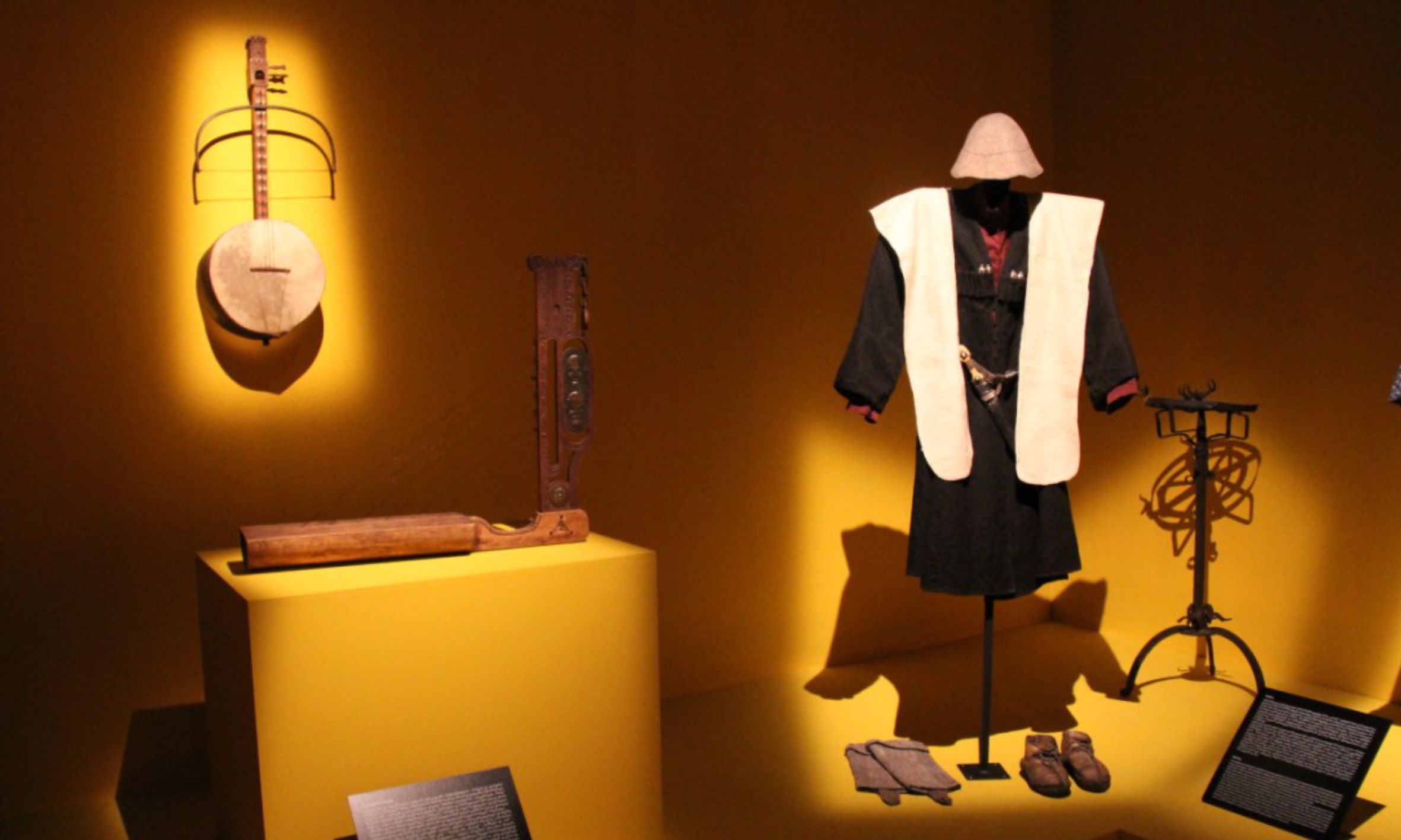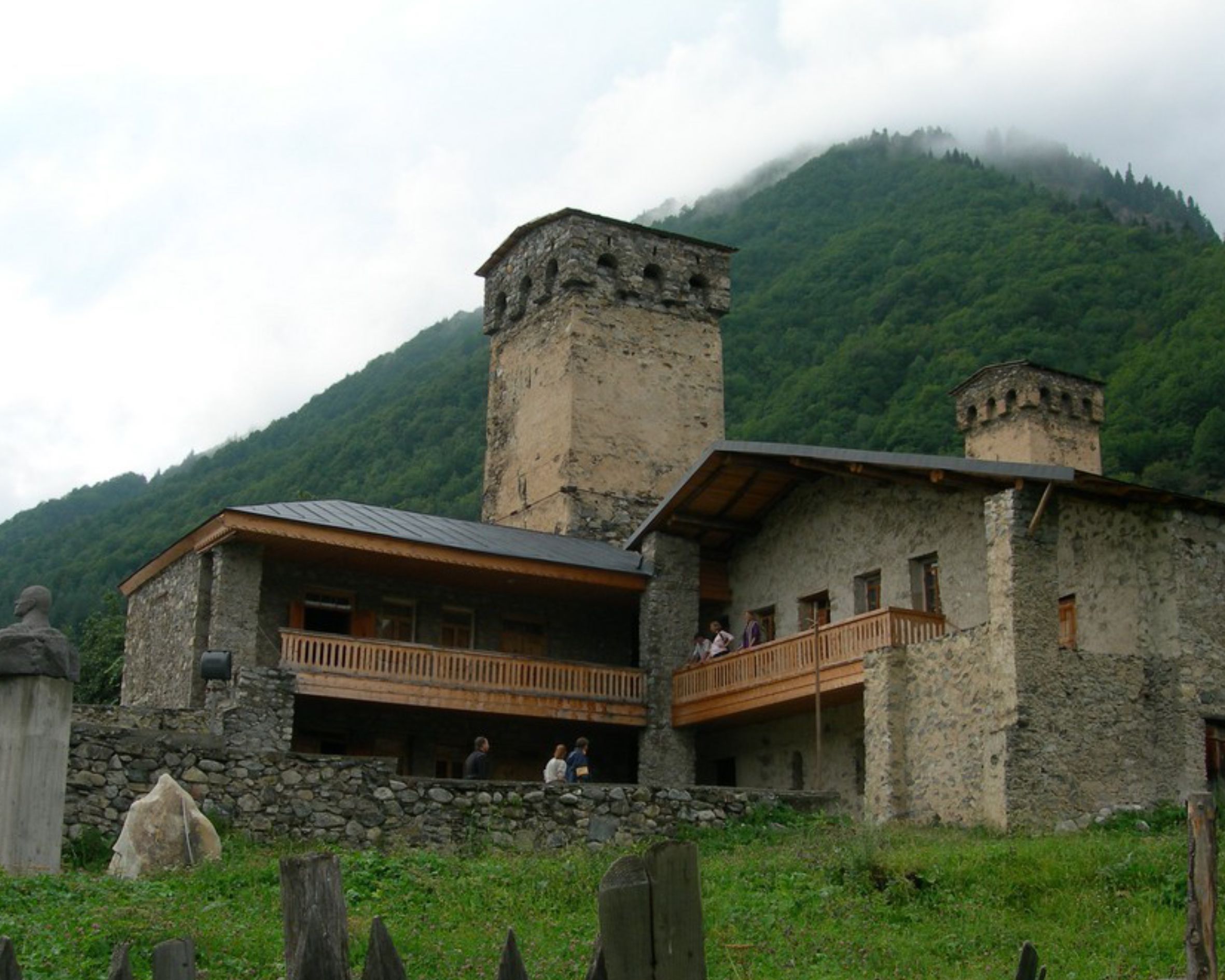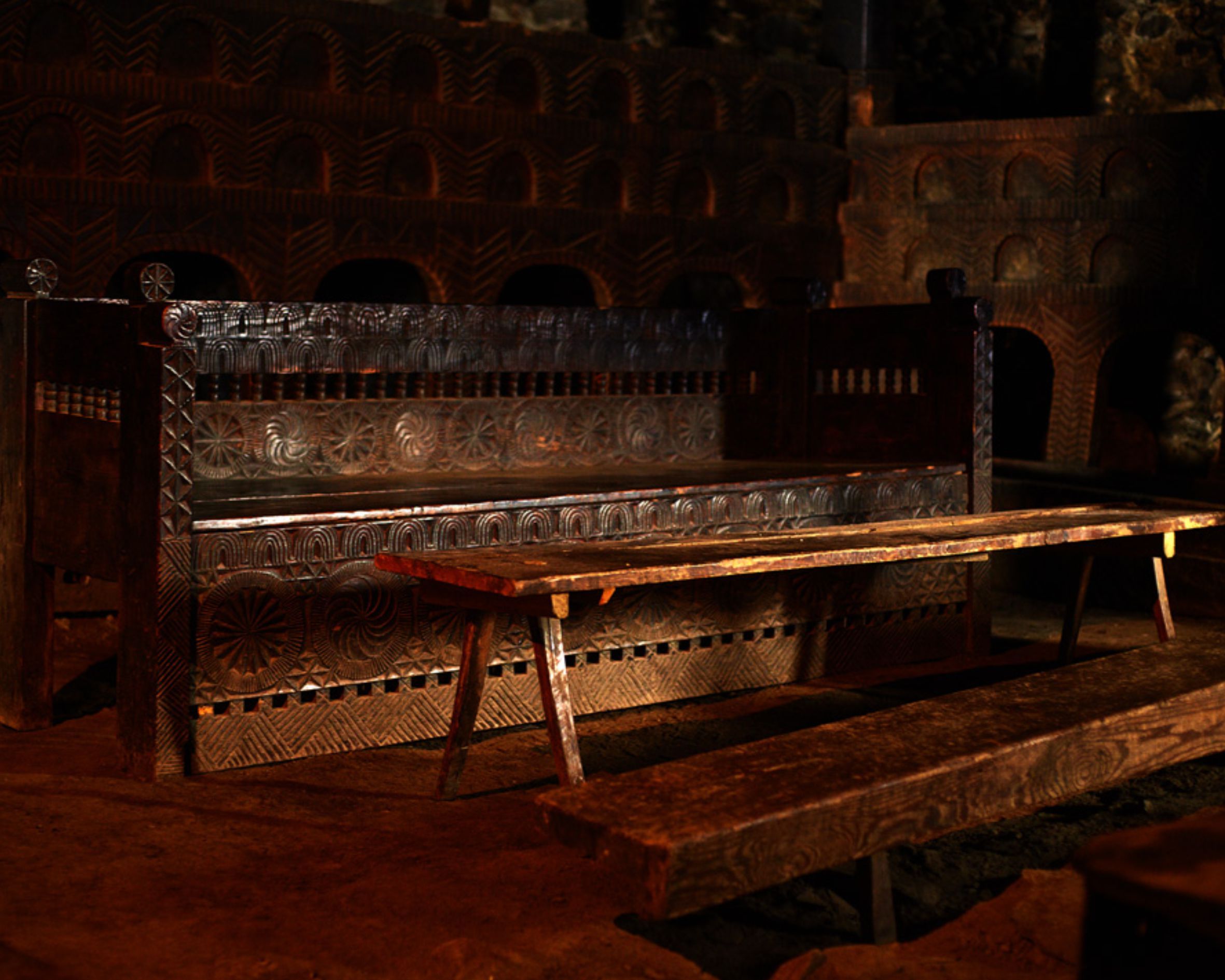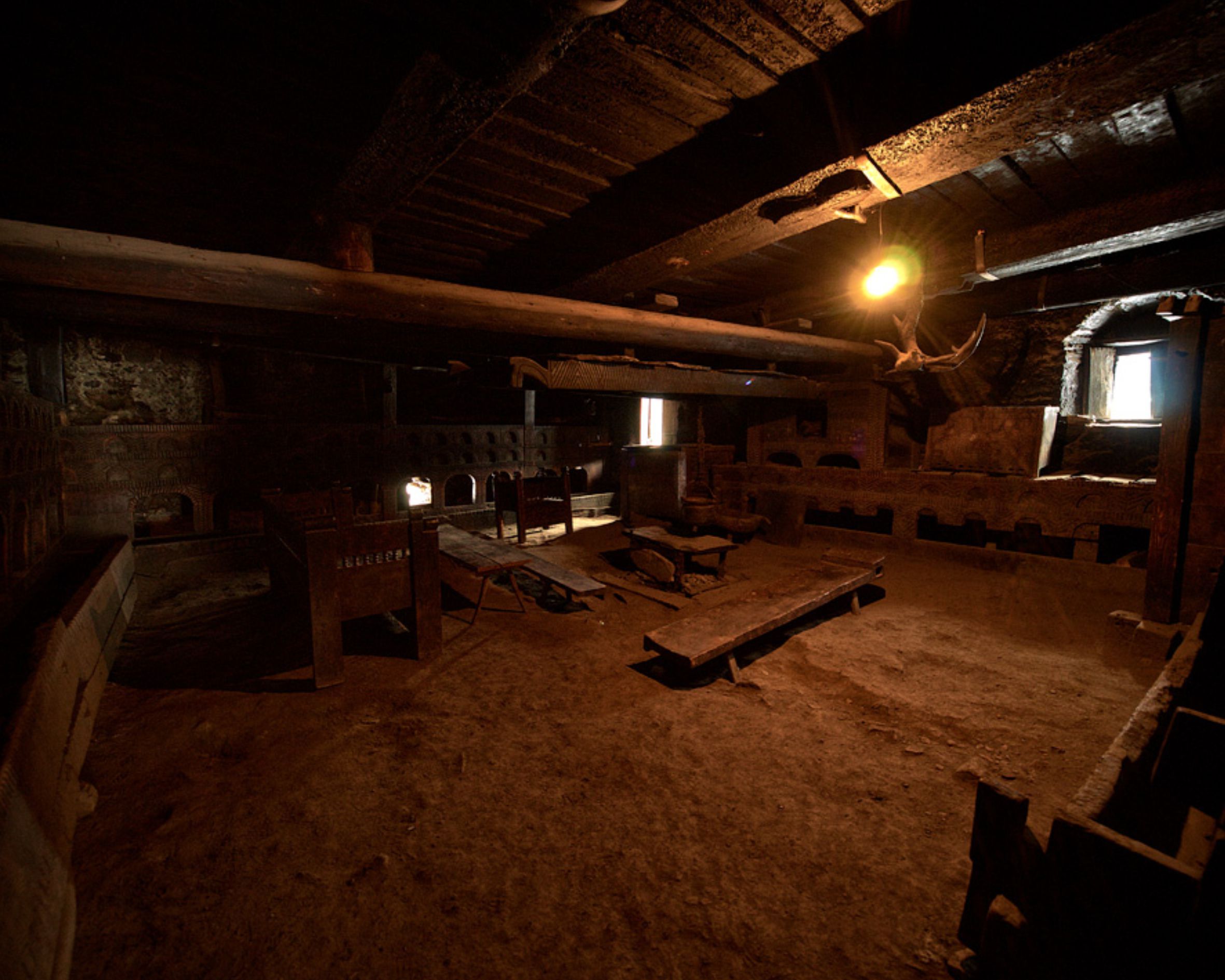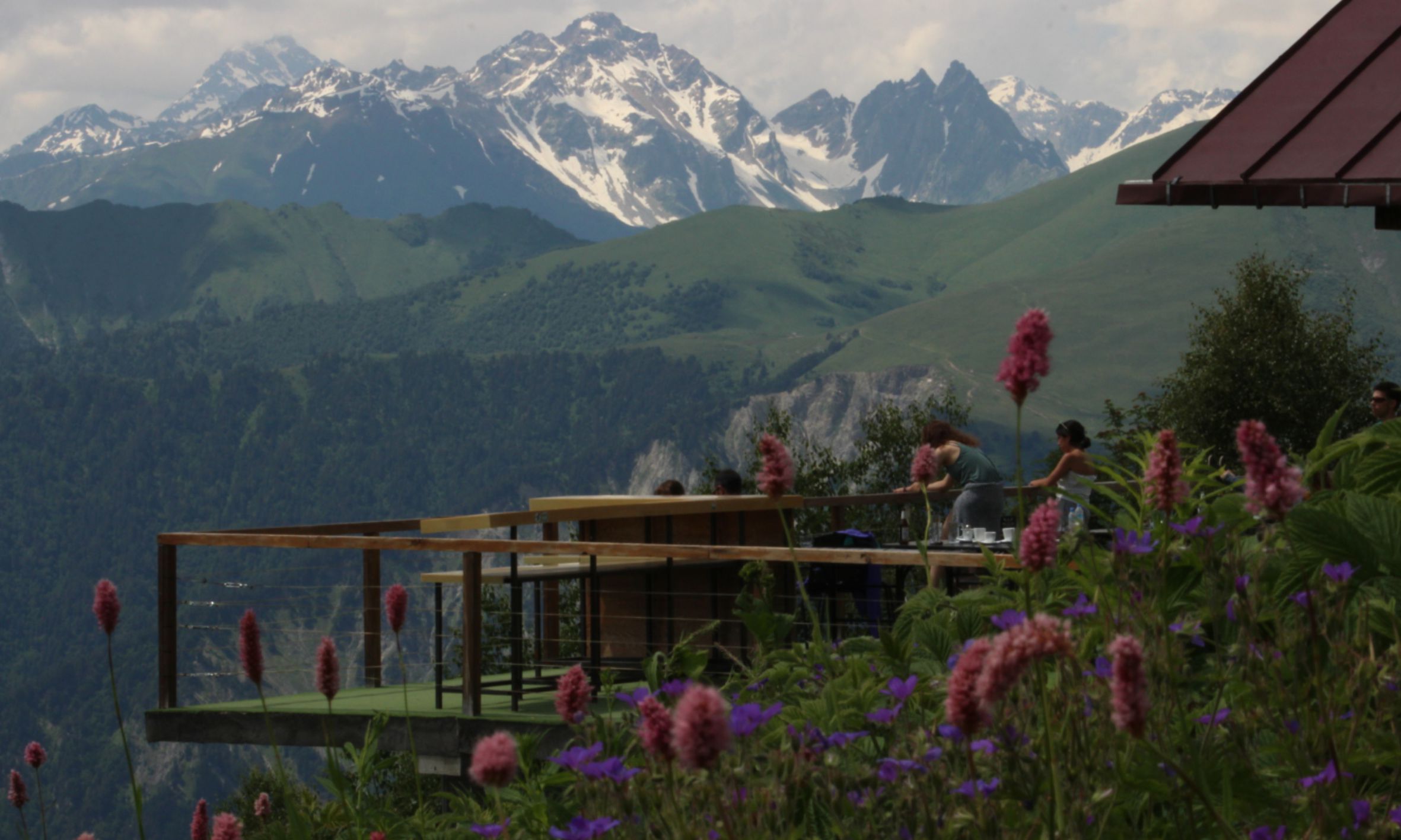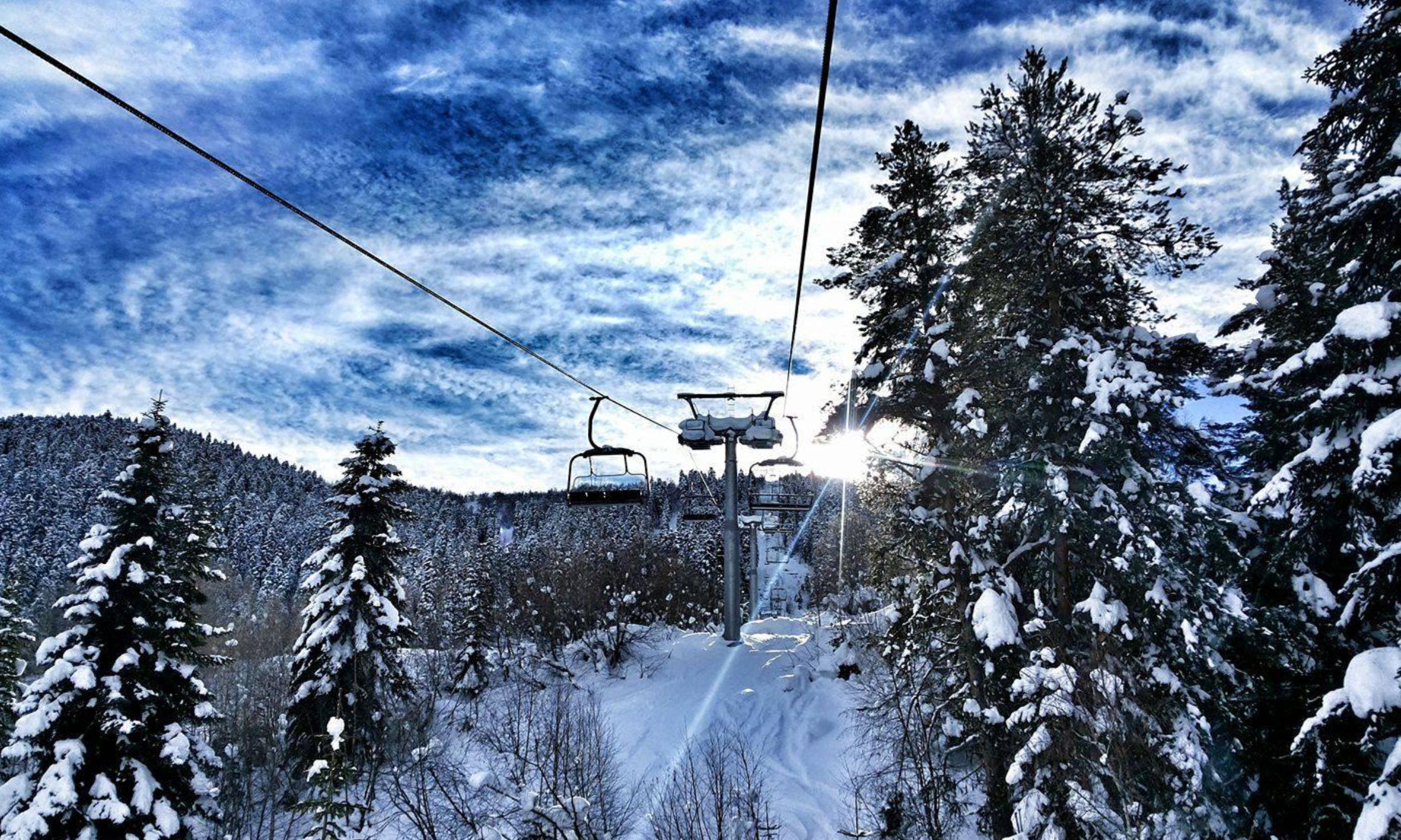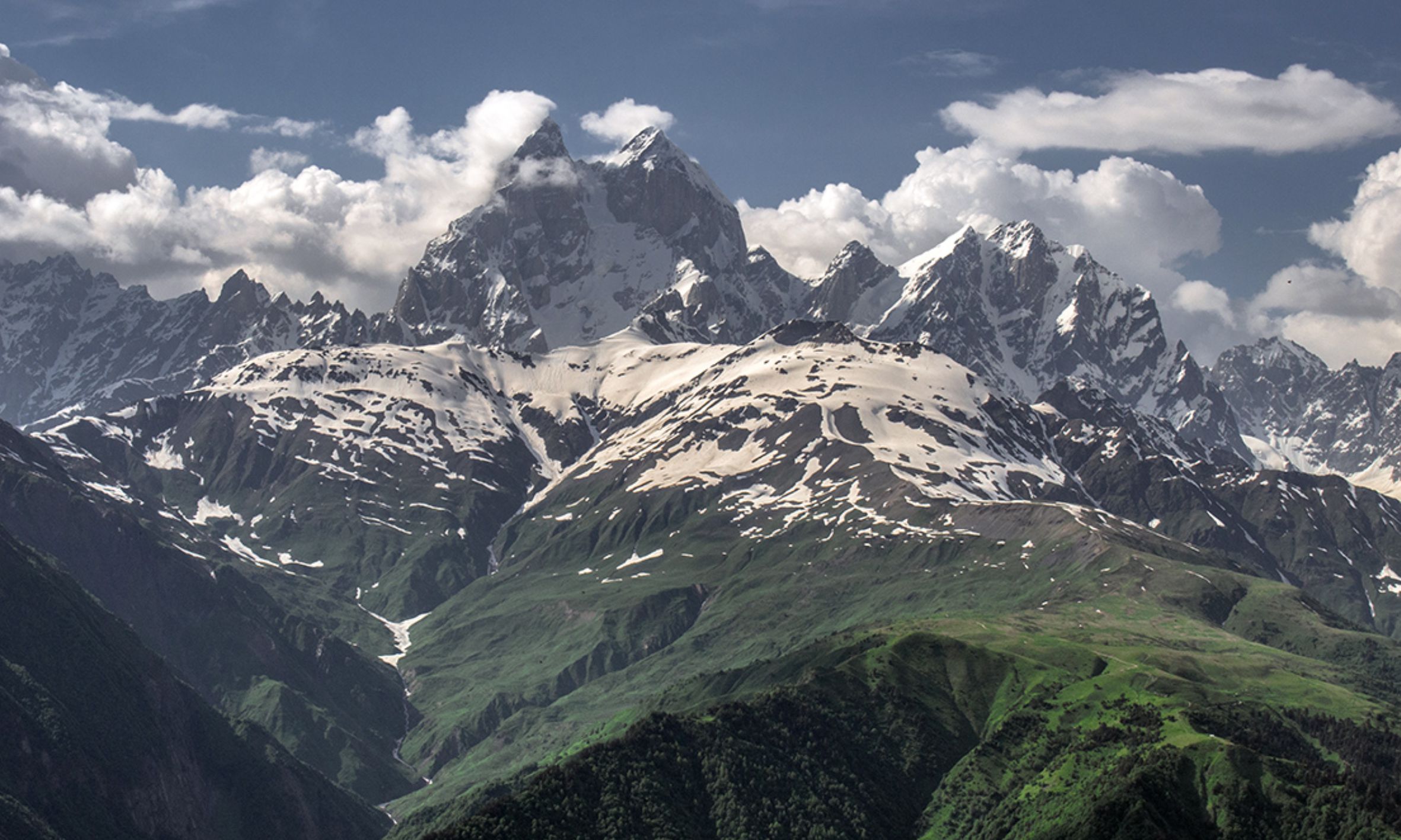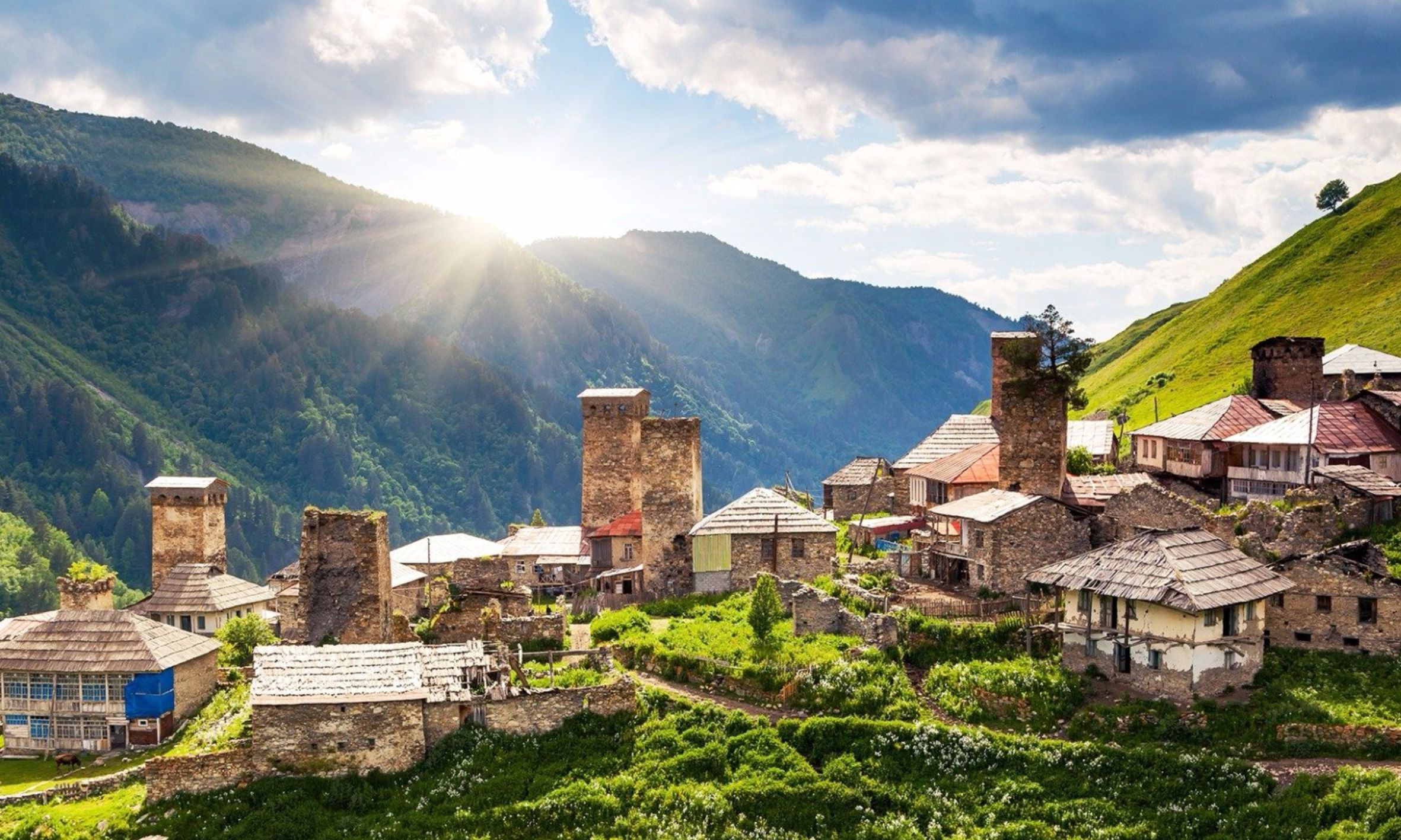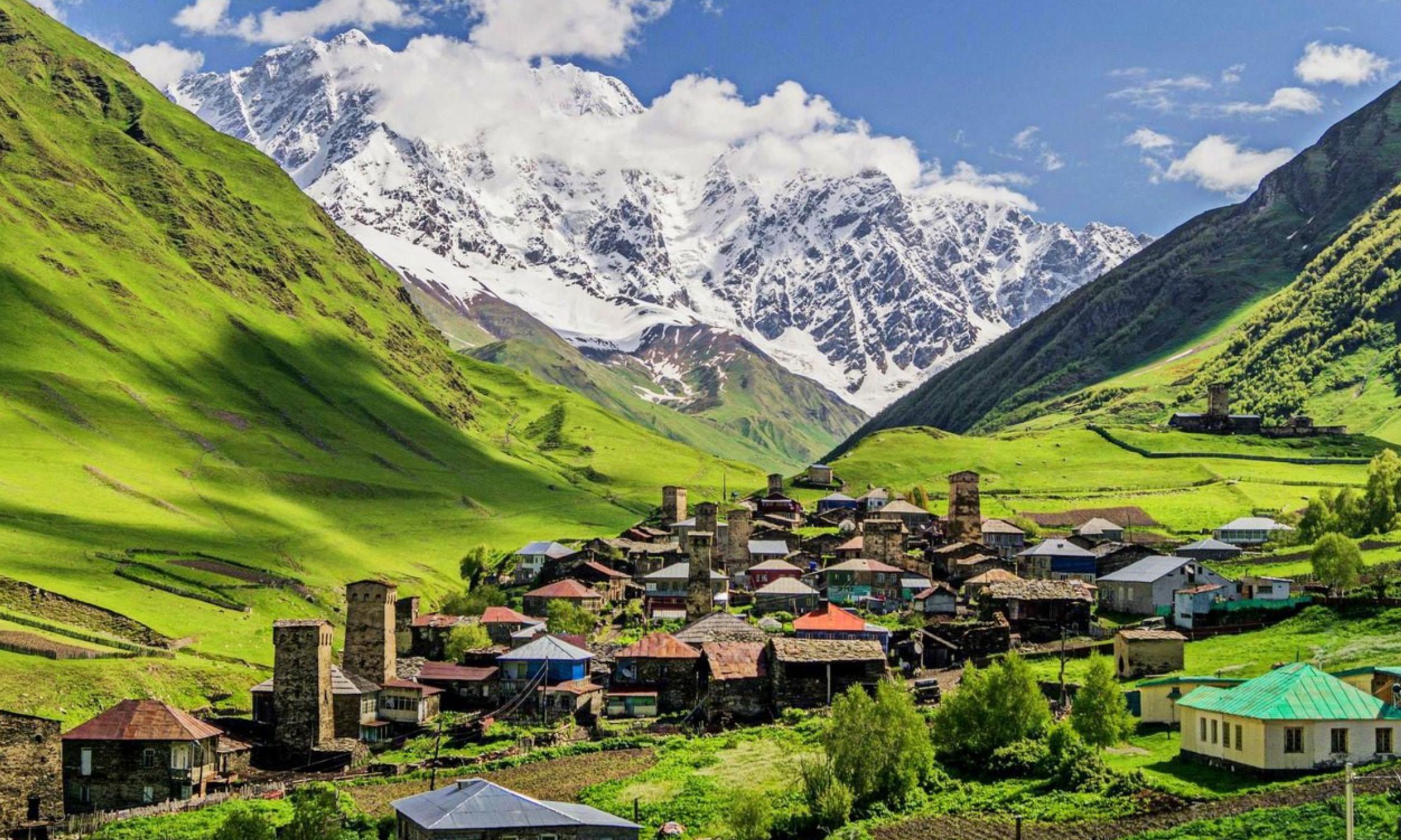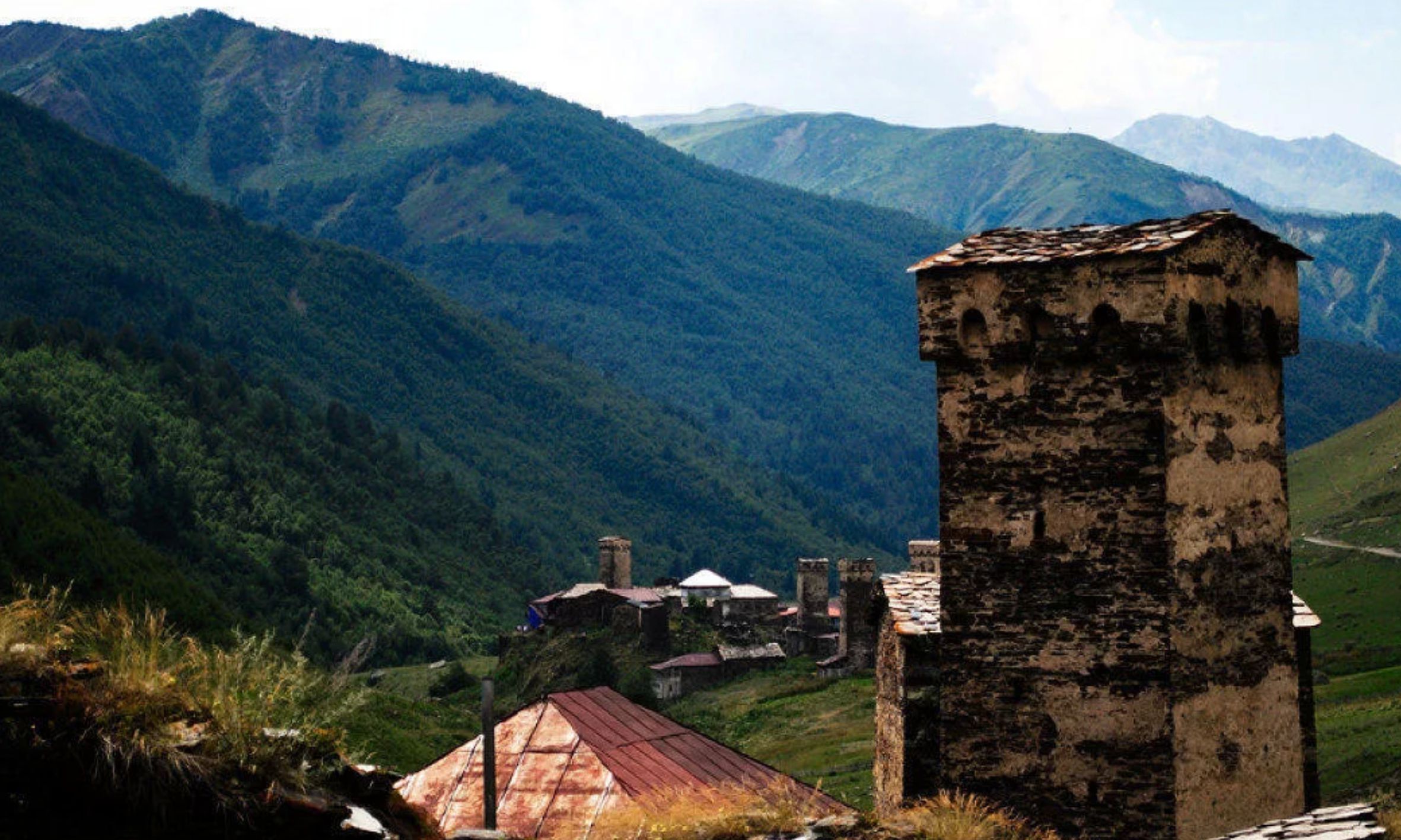Svaneti
3 day tour
Svaneti is a historical mountain region in the north-west of Georgia, inhabited by Svans. Geographically and historically, Svaneti is divided into Upper and Lower Svaneti, separated by the Svaneti Range. From the north and east, Upper Svaneti is bordered by the Greater Caucasus Mountain Range with the peaks of Shkhara, Ushba, Tetnuldi, and others, along which passes the Georgian border with Russia. From the south, the Svaneti ridge rises, which adjoins directly to the Main Caucasus Range and closes Upper Svaneti from the east.
3 day tour
Svaneti is a historical mountain region in the north-west of Georgia, inhabited by Svans. Geographically and historically, Svaneti is divided into Upper and Lower Svaneti, separated by the Svaneti Range. From the north and east, Upper Svaneti is bordered by the Greater Caucasus Mountain Range with the peaks of Shkhara, Ushba, Tetnuldi, and others, along which passes the Georgian border with Russia. From the south, the Svaneti ridge rises, which adjoins directly to the Main Caucasus Range and closes Upper Svaneti from the east.
Day 1. Tbilisi - Mestia
1. Dadiani Palace
The Italian missioner Arcangelo Lamberti, who visited Georgia in the 17th century, wrote that "the duke has more than 50 palaces, between which the Zugdidi palace is most beautiful: it is built with very good stone, its inner chambers are decorated in Persian style" The present palace was built in 1873-78 for Duchess Ekaterine Dadiani. It was designed by architect Edgar J. Rice. The second palace was built in the 1880s for her son, the last Megrelian ruler, designed by Leonid Vasiliev.
1. Dadiani Palace
The Italian missioner Arcangelo Lamberti, who visited Georgia in the 17th century, wrote that "the duke has more than 50 palaces, between which the Zugdidi palace is most beautiful: it is built with very good stone, its inner chambers are decorated in Persian style" The present palace was built in 1873-78 for Duchess Ekaterine Dadiani. It was designed by architect Edgar J. Rice. The second palace was built in the 1880s for her son, the last Megrelian ruler, designed by Leonid Vasiliev.
2. Enguri reservoir
Enguri HPP is the largest hydroelectric station in the Caucasus. It is located on the Enguri River near the city of Jvari. The length of the reservoir reaches 27 km. in the picturesque gorges of the Samegrelo and Svaneti mountains
Enguri HPP is the largest hydroelectric station in the Caucasus. It is located on the Enguri River near the city of Jvari. The length of the reservoir reaches 27 km. in the picturesque gorges of the Samegrelo and Svaneti mountains
3. Mestia
The village surrounded by mountains is the modern administrative and tourist capital of Upper Svaneti. All visitors usually stop here, and most of the routes in the surrounding mountains and communities start from here. In Mestia, new hotels and guesthouses open every year, shops and cafes work, there are ATMs. In Svaneti, small villages are united in communities - historically it was easier to survive in this harsh area. So, Mestia consists of several ancient villages: Lagami, Lanchvali and Lekhtagi. The main landmarks of the place are the State Historical and Ethnographic Museum, which holds up to 209,000 exhibits in its collection, including manuscripts, ceiling paintings, an archaeological investigation base, a fund's repository; House Museum named after Michael Khergiani; the house-museum of the Margiani family; Museum-Park in the village of Chadzhashi (open-air museum). The Mestia municipality has 45 fresco churches. In addition, there are 107 churches, 175 Svan towers and more than 100 Svan houses (machubi), which are considered as monuments of the Cultural Heritage.
The village surrounded by mountains is the modern administrative and tourist capital of Upper Svaneti. All visitors usually stop here, and most of the routes in the surrounding mountains and communities start from here. In Mestia, new hotels and guesthouses open every year, shops and cafes work, there are ATMs. In Svaneti, small villages are united in communities - historically it was easier to survive in this harsh area. So, Mestia consists of several ancient villages: Lagami, Lanchvali and Lekhtagi. The main landmarks of the place are the State Historical and Ethnographic Museum, which holds up to 209,000 exhibits in its collection, including manuscripts, ceiling paintings, an archaeological investigation base, a fund's repository; House Museum named after Michael Khergiani; the house-museum of the Margiani family; Museum-Park in the village of Chadzhashi (open-air museum). The Mestia municipality has 45 fresco churches. In addition, there are 107 churches, 175 Svan towers and more than 100 Svan houses (machubi), which are considered as monuments of the Cultural Heritage.
Day 2.
1. The State Historical and Ethnographic Museum
The State Historical and Ethnographic Museum, which has a collection of up to 209,000 exhibits, including: icons, jewelry, stamping, hunting accessories, military armor, coins, manuscripts, ceiling painting, an archaeological investigation base, a repository of the foundation and many other masterpieces of applied art. It was built by Georgian scientists and local art workers in 1936.
1. The State Historical and Ethnographic Museum
The State Historical and Ethnographic Museum, which has a collection of up to 209,000 exhibits, including: icons, jewelry, stamping, hunting accessories, military armor, coins, manuscripts, ceiling painting, an archaeological investigation base, a repository of the foundation and many other masterpieces of applied art. It was built by Georgian scientists and local art workers in 1936.
2. House Museum of the Margiani Family
The Svan residential complex (house and tower of the Margiani family) was built in the XII century in the village of Lanchvali, not far from the center of Mestia. Here you can learn about the history of the Svan towers, about the Svans and their way of life.
The Svan residential complex (house and tower of the Margiani family) was built in the XII century in the village of Lanchvali, not far from the center of Mestia. Here you can learn about the history of the Svan towers, about the Svans and their way of life.
3. Hatsvali
One of the new ski resorts in Georgia, which is located in Svaneti, 6 kilometers from the Mestia district center, on the Zuruldi ridge. In winter, you can ski here, and in summer you can go up by ropeway to the top of the ridge where is located the cafe "Zuruldi". Now Hatsvali is a major attraction of Mestia and partially of the whole Svaneti. Hatsvali ski resort begins at an altitude of 1865 meters - there is the lower station of the main ropeway. The upper station is located on the mountain Zuruldi, where the height is 2347 meters.
One of the new ski resorts in Georgia, which is located in Svaneti, 6 kilometers from the Mestia district center, on the Zuruldi ridge. In winter, you can ski here, and in summer you can go up by ropeway to the top of the ridge where is located the cafe "Zuruldi". Now Hatsvali is a major attraction of Mestia and partially of the whole Svaneti. Hatsvali ski resort begins at an altitude of 1865 meters - there is the lower station of the main ropeway. The upper station is located on the mountain Zuruldi, where the height is 2347 meters.
Day 3. Ushguli - Tbilisi
Ushguli
Community in the municipality of Mestia. Consists of 4 villages: Zhibiani, Chvibiani, Murkmeli Chazhashi. Ushguli is located at the foot of Mount Shkhara, at the confluence of the Enguri and Shavtskla-Kvishara rivers. The height of the Ushgul community varies between 2,100 and 2,200 m. With such data, Ushguli is considered as the highest population in Europe. Today, 70 families live in Ushguli. The Ushguli community is a UNESCO World Heritage Site. There are typical Svan defensive towers. The number of these towers today reaches 30.
Ushguli
Community in the municipality of Mestia. Consists of 4 villages: Zhibiani, Chvibiani, Murkmeli Chazhashi. Ushguli is located at the foot of Mount Shkhara, at the confluence of the Enguri and Shavtskla-Kvishara rivers. The height of the Ushgul community varies between 2,100 and 2,200 m. With such data, Ushguli is considered as the highest population in Europe. Today, 70 families live in Ushguli. The Ushguli community is a UNESCO World Heritage Site. There are typical Svan defensive towers. The number of these towers today reaches 30.

